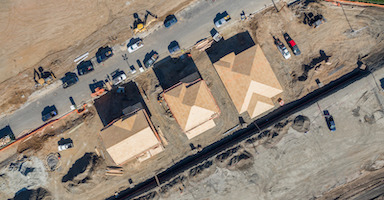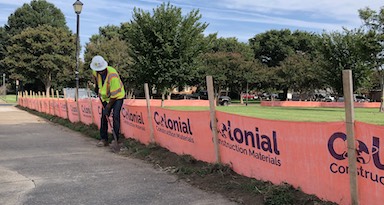20 JulHow to Select the Right Silt Fence For Your Site
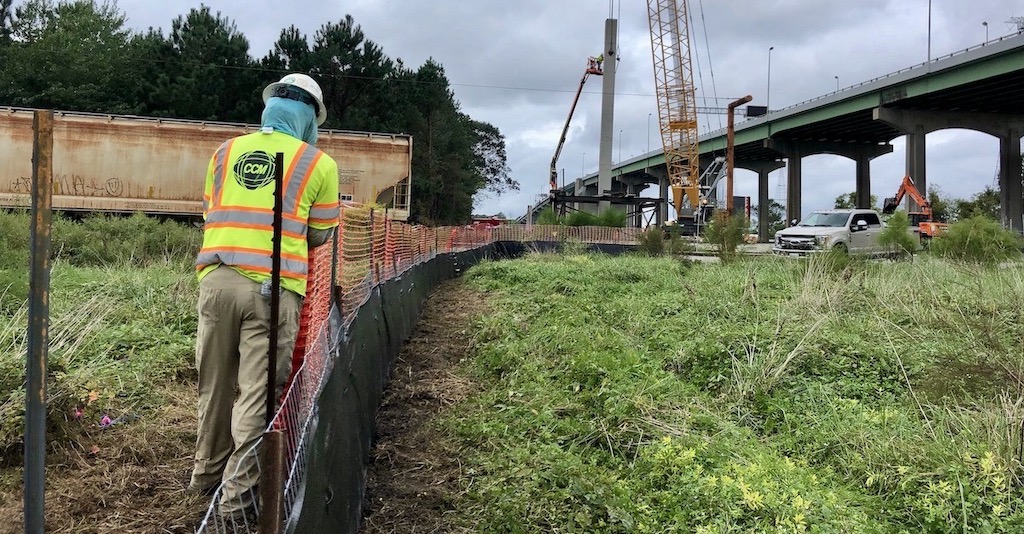
Compare Silt Fence Materials to Find the Best Choice for Your Project
Silt fence fabric is a requirement for most construction sites in the Mid-Atlantic and Southeast. This temporary fence filters stormwater runoff and retains sediment on the construction site which is why it is installed around site perimeters, low lying areas, stockpiles, and sensitive areas like wetlands.
Silt fence standards including fabric specification, post type, post size, post spacing and reinforcement options vary greatly from state-to-state and even localities within a state. Project specifications as well as DOT and DEQ standards should specify what silt fence to install on site but it’s important to know what materials are available to you; in many situations you may have the ability to choose the product when multiple products meet the specifications.
In this article, we’ll explain the various silt fence options you will likely see in the Mid-Atlantic, including fabric, posts and reinforcement products.
Armed with the knowledge of what your material options are, set yourself up for on-site success by reading your project plans and familiarizing yourself with your state and local silt fence standards including DOT and DEQ.
Looking for a little DOT-help? Head to our Resources page to find DOT cheat sheets.
Silt Fence Fabric
Silt fence fabric is a geotextile fabric cut to 24-inch, 36-inch and 42-inch widths. For many years, woven slit films were the primary fabric for temporary sediment barriers. While woven slit films are still the most common in the Mid-Atlantic, you now have more fabrics to choose from including monofilaments, nonwovens, and hybrids. At Colonial Construction Materials, we primarily supply woven slit films and monofilaments.
Woven Slit Film
A woven slit film geotextile fabric weaves together polypropylene “tapes” (or slit films) to create a woven fabric that has good strength, separation and filtration capabilities. Woven slit films are economical and widely produced. While slit films are not high performance fabrics, as a silt fence fabric they perform their function well: they retain sediment in perimeter control applications and allow filtered runoff to flow through the slit films. Most DOT Approved Product Lists in the Mid-Atlantic approve woven slit film fabrics for silt fence.
Our woven slit film silt fences include our standard Commercial Silt Fence, VDOT Silt Fence and 200 x 200 Silt Fence.
Monofilament
Woven monofilament fabrics are made from extruded polypropylene yarns that more closely resemble fishing line than slit film tapes. Monofilaments are known for their strength and hydraulic performance, making them a great choice for silt fence fabric.
Monofilaments have a greater Apparent Opening Size (AOS) than woven slit films which translates to greater retention of small particles like silt and sediment. While this may seem confusing, the key detail to note (for simplicity sake in this article), is that a smaller AOS means that more larger particles will pass through the geotextile fabric. Our monofilament fabric is 400EO Silt Fence. This fabric is VDOT approved and meets Virginia DEQ standard specifications for High Performance Silt Fence in the newly revised Virginia Stormwater Management Handbook, Version 1.0 (Table C-PCM-04-5).
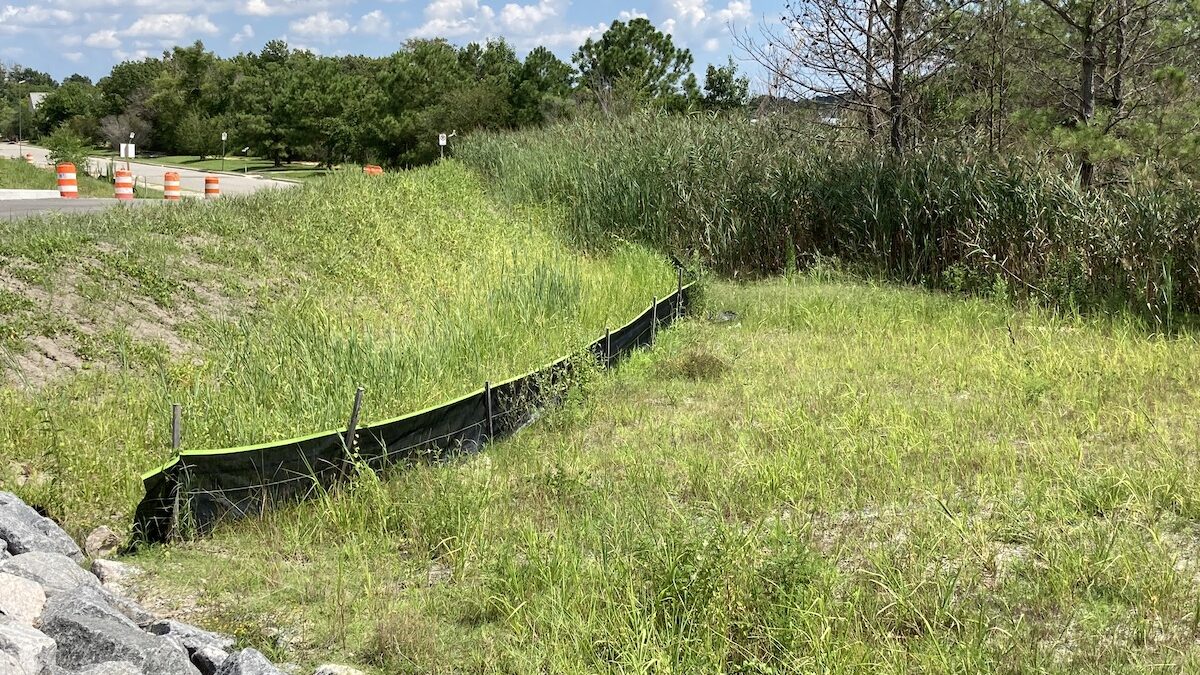
Woven Slit Film Silt Fence vs Monofilament Silt Fence
Why choose one silt fence fabric or the other? First and foremost you should always refer to project specifications and whichever regulatory group (DOT or DEQ) has jurisdiction over your project. If you have the ability to choose between a woven slit film or a monofilament, consider the following:
- Woven silt films are more economical
- Monofilaments are higher performance fabrics
If your site needs an economical fabric that is not subject to high stress or high sheet flow, a slit film may be your best choice.
If your project needs a more durable fabric that is installed near wetlands, is subject to high sheet flow and needs to meet the demands of a long-term project, monofilament fabric would be the better fence for your project.
| Silt Fence | Grab Tensile Strength ASTM D4632 (MD/CD) | AOS ASTM D4751 | Permittivity ASTM D4491 | Water Flow Rate ASTM D4491 | Filtering Efficiency ASTM D5141 |
|---|---|---|---|---|---|
| Commercial Slit Film | 100 x 100 lbs | 30 US Sieve | 0.05 sec-1 | 6 gpm/sf | Not published |
| W100 Slit Film | 124 x 124 lbs | 30 US Sieve | 0.10 sec-1 | 10 gpm/sf | Not published |
| 200 x 200 Slit Film | 200 x 200 lbs | 40 US Sieve | 0.05 sec-1 | 5 gpm/sf | Not published |
| 400EO Monofilament | 370 x 180 lbs | 40 US Sieve | 2.1 sec-1 | 154 gpm/sf | >89% |
Get a quote to compare silt fence fabrics.
Posts and Poles
When it comes to installing silt fence fabric, standards also vary for post type, height and spacing. Material selection comes down to three choices: wood, steel stakes, or galvanized steel line poles. Spacing is determined by DOT and DEQ standards but typically posts will be spaced every 4-feet, 6-feet or 10-feet apart.
Oak Wood Stakes
We manufacture our own wood stakes at our mill in Oilville, Virginia. Our silt fence stakes are all nominal 2” x 2” oak hardwood. Most contractors will choose either 48” or 60” wood stakes for securing a silt fence barrier that doesn’t require wire reinforcement. In Virginia, Nominal 2” x 2” x 60” Oak Stakes meet VDOT standards for Type A Silt Fence and DEQ standards for oak wood stakes.
Steel Posts
Steel posts, commonly referred to as T-Posts, are also commonly used for silt fence installations. Steel posts can be painted or unpainted; both are available in 5-foot and 6-foot lengths. Painted T-posts are hot dipped galvanized, finished in a green enamel and have a kick plate compared to unpainted steel posts which are left “raw” or untreated. Unpainted steel posts are more economical but both are available and don’t differ in weight.
In Virginia, Steel Posts used for VDOT Type B installations should be at least 5-feet and have a minimum weight of 1.25 pounds per linear foot. Virginia DEQ also specifies a 5-foot tall steel post but with a minimum weight of 1.33 pounds per linear foot.
Galvanized Line Poles
Galvanized line poles are the third option for silt fence posts. In the Mid-Atlantic, we typically see galvanized line poles for Super Silt Fence installations.
Super Silt Fence is silt fence fabric reinforced with chain link and secured with galvanized line poles that are spaced 10-feet apart.
According to Virginia DEQ, “super silt fence may be used in areas where there is a high potential for physical stress, as at the bottoms of steep fills, where the silt fence may be impacted by loose fill material or dirt clods may roll down the slope face during grading. Reinforced and super silt fence will resist breakage and overturning from physical impacts much better than regular silt fence and will require much less maintenance.”
Galvanized line poles are a cylindrical pole that is 2.5-inches in diameter and 6-feet tall. We supply line poles that meet both Virginia and Maryland state standards.
Wood Posts vs. Steel Posts vs. Galvanized Line Poles
When silt fence post selection is up to you, consider the following when comparing your options:
- Oak wood stakes are the most economical but least durable.
- Oak stakes should not be used for wire-reinforced silt fence.
- Pre-attached kits are only available with oak stakes. Stakes are attached and spaced at standard 6-foot and 10-foot increments on silt fence fabric.
- Steel posts are durable and work for standard and reinforced silt fence.
- Steel stakes can be capped with OSHA T-post caps.
- Galvanized line poles should always be used for super silt fence.
Reinforcement
Some areas of your site might require additional silt fence fabric reinforcement.
Use reinforcement for sensitive areas like wetlands, installations at the bottom of hills or slopes, areas subject to high concentrated flow and areas likely to experience physical stress. Wire fence is the most traditional material for silt fence reinforcement but compost filter sock and straw bales are also occasionally used to bolster temporary barriers.
Welded Wire
If wire fence is the specified material, welded wire fence is a great reinforcement option. We supply a 14 gauge welded wire that is galvanized for durability and has 2” x 4” mesh openings. Welded Wire is lightweight and easy to handle compared to chain link.
VDOT changed its Type B Silt Fence standard in 2020 and no longer requires wire-reinforcement for VDOT projects. Virginia DEQ, however, maintains a Reinforced Silt Fence specification that requires a 14 gauge fence with a maximum mesh spacing of 6 inches.
Hog Wire
Hog wire is another wire fence reinforcement option. Our hog wire is a little more lightweight than our welded wire. The top and bottom wires are 14-gauge wire while the horizontal filler lines are 16-gauge. Hog wire’s mesh openings get larger and larger from bottom to top.
Chain Link
Chain link for silt fence reinforcement differs from chain link panels for site perimeter security. Wire reinforcement chain link is manufactured from woven helical wire that forms diamond shapes. The wire is galvanized for weather resistance. Chain link is always used for super silt fence reinforcement but the specified gauge will vary from state to state. In Maryland, MSHA requires a minimum 9 gauge chain link roll while Virginia DEQ specifies an 11.5 gauge fence.
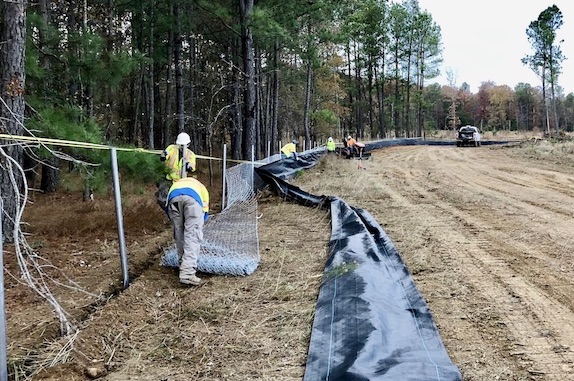
Compost Filter Sock
Compost filter sock is not the traditional choice for silt fence reinforcement but it is a viable option for reinforcing perimeter controls. Compost filter sock is a heavy erosion control wattle filled with composted wood chips and wrapped in a multifilament netting. Just like silt fence, compost filter sock is designed to trap sediment, slow the velocity of runoff and release filtered stormwater. When installed for silt fence reinforcement, compost filter sock acts as a secondary filter while reinforcing the silt fence fabric with its girth and weight. In this application, consider an 18-inch or 24-inch filter sock.
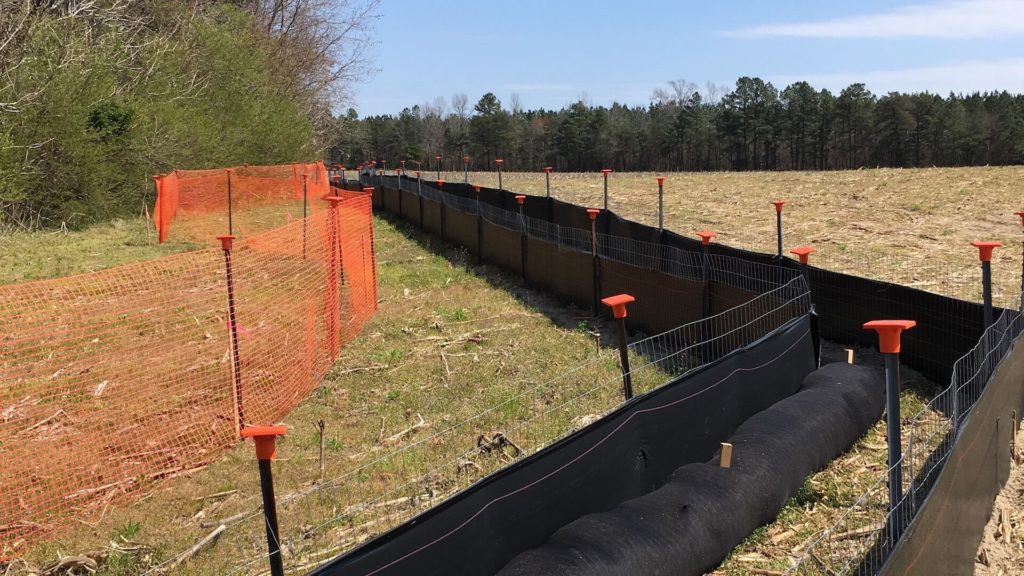
Straw Bales
Straw bales are also sometimes used for silt fence reinforcement. In erosion control applications, straw bale barriers are used to trap small amounts of sediment and decrease the velocity of sheet flow. Similar to compost filter sock, straw bales should be used for reinforcing perimeters and low velocity areas.
Comparing Reinforcement Products
When weighing your options for silt fence reinforcement, consider where the fence is installed and how much stress and sheet flow it will experience. With DOT and DEQ considerations for your state in mind, consider the following:
- Welded wire fence and hog wire fence are both lightweight and easy to install.
- Our welded wire fence has a 14 gauge wire compared to Hog Wire which has gauge and 16 gauge wires.
- Chain link fence is more difficult to handle but must be used for super silt fence.
- Compost filter sock and straw bales are not generally DOT or DEQ specified reinforcement products but they both can be considered for perimeter control barriers.
- Compost filter sock can cover more linear feet per unit than a straw bale but requires a machine to install.
Customizations – Logo Silt Fence
Upgrade your silt fence fabric to logo silt fence to maximize your company’s brand visibility. We print logo silt fence at our headquarters in Oilville, Virginia. Logos can be printed onto black or orange fabrics as well as 400EO silt fence.

Learn more about the process here.
Don’t Forget Attachments
What is your preferred attachment style? We supply hog rings, tie wire and aluminum ties for attaching silt fence fabric to posts and wire. Attachment type may be specified but oftentimes it comes down to personal preference for you and your installation division. Some crews staple fabric to fence post while others like to tie.
Keep in mind that wire reinforcement and super silt fence requires aluminum ties or tie wire to attach the fabric, post and wire.
Get a Quote for Your Next Project
Now that you know the pros and cons of our materials, talk to a sales representative about quoting your next project. If you need assistance with meeting a project specification or understanding your state’s DOT standards, we can discuss that with you too.
Learn More About Silt Fence
Erosion Control for Residential Construction
Erosion control can be challenging on any construction site. Mitigating erosion and managing runoff on…
Customize Temporary Fence
Customize temporary fence to promote your company while meeting requirements for perimeter protection and sediment…


